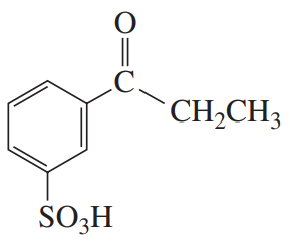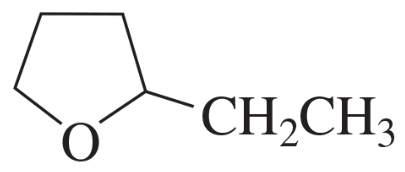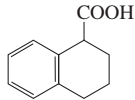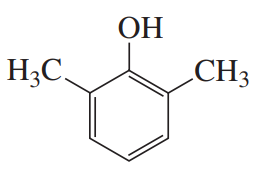 Back
BackProblem 23b
Show how the following compounds can be synthesized from benzene:
b.
Problem 24a
Show how each of the following compounds can be synthesized from benzene:
a. o-bromopropylbenzene
Problem 24d
Show how each of the following compounds can be synthesized from benzene:
d. p-chloroaniline
Problem 24f
Show how each of the following compounds can be synthesized from benzene:
f. m-xylene
Problem 24g
Show how each of the following compounds can be synthesized from benzene:
g. 2-phenylpropene
Problem 24h
Show how each of the following compounds can be synthesized from benzene:
h. m-bromopropylbenzene
Problem 24i
Show how each of the following compounds can be synthesized from benzene:
i. 1-phenyl-2-propanol
Problem 25a
What is the major product(s) of each of the following reactions?
a. bromination of p-methylbenzoic acid
Problem 25b
What is the major product(s) of each of the following reactions?
b. chlorination of o-benzenedicarboxylic acid
Problem 25e,f
What is the major product(s) of each of the following reactions?
e. nitration of p-methoxybenzaldehyde
f. nitration of p-tert-butylmethylbenzene
Problem 28
Why isn’t FeBr3 used as a catalyst in the first step of the synthesis of 1,3,5-tribromobenzene?
Problem 29
Explain why a diazonium group on a benzene ring cannot be used to direct an incoming substituent to the meta position.
Problem 31d
Show how the following compounds can be synthesized from benzene:
d. m-methylnitrobenzene
Problem 32
What product is formed from the reaction of p-methylphenol with benzenediazonium chloride?
Problem 33
In the mechanism for electrophilic aromatic substitution with a diazonium ion as the electrophile, why does nucleophilic attack occur on the terminal nitrogen of the diazonium ion rather than on the nitrogen that has the formal positive charge?
Problem 34
Draw the structure of the activated benzene ring and the diazonium ion used in the synthesis of each of the following compounds, whose structures can be found on page 607.
b. methyl orange
Problem 35
Which amide bond is hydrolyzed in the first step of the conversion of temozolomide to methyldiazonium?
Problem 37
Diazomethane can be used to convert a carboxylic acid to a methyl ester. Propose a mechanism for this reaction.
Problem 38
Draw resonance contributors for the carbanion that would be formed if meta-chloronitrobenzene were to react with hydroxide ion. Why doesn't the reaction occur?
Problem 39a
Rank the following compounds from greatest tendency to least tendency to undergo nucleophilic aromatic substitution:
chlorobenzene
1-chloro-2,4-dinitrobenzene
p-chloronitrobenzene
Problem 39b
b. Rank the same compounds from greatest tendency to least tendency to undergo electrophilic aromatic substitution.
chlorobenzene, 1-chloro-2,4-dinitrobenzene, p-chloronitrobenzene
Problem 40c
Show how each of the following compounds can be synthesized from benzene:
c. p-bromoanisole
Problem 40d
Show how each of the following compounds can be synthesized from benzene:
d. anisole
Problem 41a
Design a synthesis for each of the following, using an intramolecular reaction:
a.
Problem 41d
Design a synthesis for each of the following, using an intramolecular reaction:
d.
Problem 41e
Design a synthesis for each of the following, using an intramolecular reaction:
e.
Problem 41f
Design a synthesis for each of the following, using an intramolecular reaction:
f.
Problem 42d,e,f
Draw the structure for each of the following:
d. benzaldehyde
e. anisole
f. styrene
Problem 42g,h,i
Draw the structure for each of the following:
g. toluene
h. tert-butylbenzene
i. benzyl chloride
Problem 43c
Name the following:
c.







